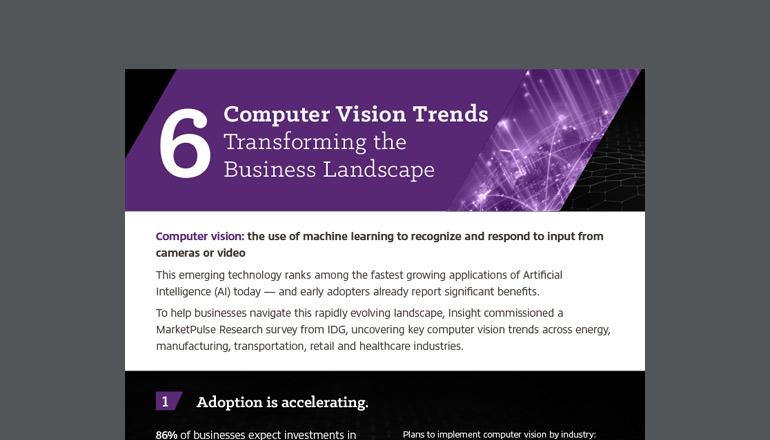Article 5 Ways AI Can Help Financial Services Compliance
Technology is changing at rapid speed. But if there’s one area outside of IT where workers are feeling breathless from trying to keep pace, it’s compliance — specifically compliance regulation and the myriad technologies that address it.
By / 5 Apr 2019 / Topics: Artificial Intelligence (AI)

Think of the 2014 movie “The Imitation Game,” in which a team of mathematicians spent an entire day trying to crack the Russian code, only to start from square one the next morning. That should give you a sense of the pains faced by present-day compliance officers.
Challenges of regulatory change management
Compliance doesn’t refresh each day as the example suggests, but the changes in regulations are copious and labor-intensive.
Since the financial crisis of 2008, the U.S. financial services industry has been under intense scrutiny. Compliance officers have been hit with an onslaught of new regulatory rules each year, and coporate officers have assumed a new level of liability — including the well-known Dodd-Frank Wall Street Reform and Consumer Protection Act of 2010, which contributed 2,300 pages of provisions alone.
And just when Financial Institutions (FIs) were getting a handle on all those pages of regulation, Congress passed a new Economic Growth, Regulatory Relief and Consumer Protection Act in May 2018, in effect repealing Dodd-Frank.
That same year, a new compliance hurdle came into effect that put a padlock on data privacy: the General Data Protection Regulation (GDPR).
According to a Thomson Reuters survey of compliance professionals from 800 financial services firms worldwide, regulatory updates are coming in at an average rate of more than 200 per day — about one alert every seven minutes.
Of course, the financial crisis isn’t the only cause behind regulatory updates. A growing global market and consumer-friendly services such as mobile banking are also significant drivers of compliance and regulatory risk.
Regardless, the surge of regulatory compliance requirements has left many FIs and compliance practitioners feeling spent.
“It is estimated that some firms could spend up to 10% of their revenues on compliance within the next few years. This is by no means an insignificant amount,” said Muhammad bin Ibrahim, governor of the Central Bank of Malaysia (Bank Negara Malaysia) during a keynote address at the 9th International Conference on Financial Crime and Terrorism Financing (IFCTF) in 2017 and recorded in Thomson Reuters’ Cost of Compliance 2018 report.
In 2018, 61% of firms anticipated their budget for compliance teams to increase, with 14% expecting a significant increase, according to the same report.
Financial technology, or fintech, continues to disrupt the financial services industry with technology solutions to improve efficiencies, enhance user experiences and reduce costs. And, although fintech aimed at improving regulation isn’t new, the applications of next-generation technologies is evolving in exciting ways.
Artificial intelligence: A finance imperative
Like fintech, regulation technology (regtech) draws upon current or emerging technologies tailored to meet specific challenges — in this case, regulatory or compliance-related needs. Regtech is rising as a viable means to offset the increasing costs and manpower required by FIs in order to keep up with changing regulatory compliance rules.
Artificial Intelligence (AI) and machine learning, in particular, are making the greatest impact on easing the pains of keeping up with compliance and negating compliance and regulatory risk.
Here are five ways AI can improve regulatory and compliance processes:
- Improve efficiency with automation.
When a regulatory text is updated, a compliance officer must read the update, interperet the information, understand which, if any, of the changes impact the organization and then manually input the changes into the organization’s system. It’s the “interpretation” step that can cause discrepencies in understanding and application of the change.
Additionally, because not every update impacts every business, the compliane officer must parse through the reams of documentation to select the pieces that affect his or her business.
To streamline the process, companies are building semantic technology and data point models that convert regulatory text into a Natural Language Processing (NLP) system — essentially, an HTML file. AI and machine learning can be integrated into an organization’s existing systems to scan and identify the relevant updates and make changes accordingly. This saves countless hours of manual processes.
A fully automated regulation handbook is an aspirational goal, but many tegtech experts believe it could happen within the next 10 years. In order for machines to digest and execute regulation updates, there must first be a change in how regulation is written. Lawyers may well find themselves in the company of coders when writing new rules. After all, there’s no room for ambiguitiy when it boils down to zeros and ones. - Provide accurate, streamlined reporting.
Another benefit of an automated or AI-assisted process is precise, consistent and efficient reporting back to regulators. An automated process to collect, validate, analyze and share data for reporting requirements saves both time and money for the FI and the regulator. - Speed answers to prevent risk.
Chatbots could emerge as a valuable resource to financial institutions and their employees. With the ability to aggregate massive libraries of information, chatbots can quickly provide answers that would otherwise be time-consuming and labor-intensive.
Users can ask questions about a rule or verify if a transaction is compliant before execution — avoiding potential noncompliance and reducing risk. In addition, analysis of the chatbot interactions can identify systemic issues within operations that may be putting the FI at risk. - Enhance fraud detection.
Adoption of AI to combat fraud is already widespread — and will only increase with time. AI can monitor transaction history, combined with other structured and unstructured information, to identify anomalies that might indicate fraud, such as ATM hacks, money laundering, lending fraud, cyberattacks and financing of terrorism. - Increase effectiveness and breadth.
In the not too distant future, FIs will leverage each others’ AI solutions, collaborating to further protect themselves. This will create more effective training models supporting partners and clients that are shared across those FIs.
What’s next for regtech?
Still early in its adoption and deployment, AI-based regtech possibilities are vast. FIs are already forming meaningful partnerships with third-party technology solution providers to develop innovative solutions that will help them reduce costs, increase efficiencies and mitigate risks.
Speaking of risk — due to the sensitive nature of the industry, FIs must enter these agreements with caution. Whether engaging with a startup tech firm or a global enterprise, FIs must examine the company’s internal security control and ensure proper Service-Level Agreements (SLAs) and governance.






